- Home
- Nathaniel Philbrick
The Mayflower and the Pilgrims' New World Page 3
The Mayflower and the Pilgrims' New World Read online
Page 3
Serving as Jones’s first mate and pilot was Robert Coppin, who, unlike Jones, had been to America before. Also serving as pilot was John Clark, forty-five, who’d delivered some cattle to Jamestown the previous year. Giles Heale was the ship’s surgeon. In the days ahead, as sickness spread through the passengers and crew, he would become one of the most sought-after officers of the Mayflower.
Another important position was that of the cooper, who was in charge of maintaining all barreled supplies and provisions. In southampton, Jones secured the twenty-one-year-old cooper John Alden, who because of his youth and skills was already being encouraged by the Pilgrims to remain in America at the completion of the crossing. In addition, there were somewhere between twenty and thirty sailors, whose names have not survived.
In southampton, the Leideners met up with the family and friends who had first boarded the Mayflower in London and would be continuing on with them to America. The most notable of the group was Elder William Brewster, who had been hiding out in Holland and perhaps even England for the last year. Also joining them in southampton were Robert Cushman and John Carver, who was traveling with his wife, Katherine, and five servants.
Along for the journey as well was Captain Miles standish. Although not a member of the congregation, standish was well known to the Leideners. standish had served as an English mercenary in Holland and would be handling the colony’s military matters in America.
It was in southampton that they met the so-called strangers—passengers recruited by the Adventurers to take the places of those who had chosen to remain in Holland. Besides Christopher Martin, who had been designated the “governor” of the Mayflower by the Adventurers and was traveling with his wife and two servants, there were four additional families. stephen Hopkins was making his second trip to America. Eleven years earlier, in 1609, he had sailed on the Sea Venture for Virginia, only to become shipwrecked in Bermuda—an incident that became the basis for shakespeare’s play The Tempest. While on Bermuda, Hopkins had been part of an attempted mutiny and been sentenced to hang, but pleading tearfully for his life, he was spared at the last minute. Hopkins spent two years in Jamestown before returning to England and was now accompanied by his pregnant wife, Elizabeth; his son, Giles; and daughters Constance and Damaris, along with two servants, Edward Doty and Edward Leister.
In addition to the Mullinses, Eatons, and Billingtons (whom Bradford later called “one of the profanest families amongst them”), there were four unaccompanied English children: Ellen, Jasper, Richard, and Mary More. They had been sent to London by their father, who had paid for their passage to America. Ellen, eight years old, had been assigned to Edward and Elizabeth Winslow; Jasper, seven, to the Carvers; and both Richard, five, and Mary, four, to William and Mary Brewster, who were accompanied by their evocatively named sons Love and Wrestling.
◆ A steeple-crowned beaver hat attributed to Constance Hopkins.
In the meantime, matters were coming to a head between the Leideners and Thomas Weston. Robert Cushman had signed the revised agreement to work full-time with the merchants in London, but the Leideners refused to honor it. Weston stalked off in a huff, insisting that “they must then look to stand on their own legs.” As Cushman knew better than anyone, this was not in their best interests. They didn’t have enough provisions to last a year. Without Weston to provide them with the necessary funds, they were forced to sell off some of their precious provisions, including more than two tons of butter, before they could sail from southampton.
Adding to the turmoil and confusion was the behavior of Christopher Martin. The Mayflower’s governor was, according to Cushman, a monster. “[H]e insulteth over our poor people, with such scorn and contempt,” Cushman wrote, “as if they were not good enough to wipe his shoes.... If I speak to him, he flies in my face as mutinous, and saith no complaints shall be heard or received but by himself.” In a letter hastily written to a friend in London, Cushman saw only doom and disaster ahead. “Friend, if ever we make a plantation God works a miracle, especially considering how scant we shall be of victuals, and most of all un-united amongst ourselves and devoid of good tutors and regiment. Violence will break all. Where is the meek and humble spirit of Moses?”
When it finally came time to leave southampton, Cushman made sure he was with his friends aboard the Speedwell. He was now free of Martin but soon found that the Speedwell was anything but speedy. “[s]he is as open and leaky as a sieve,” he wrote. several days after clearing the Isle of Wight off England’s southern coast, it was decided the Speedwell needed repairs, and both vessels sailed for Dartmouth, a port only seventy-five miles to the west of southampton.
It was now August 17. The repairs were quickly completed, but this time the wind refused to cooperate. People were beginning to panic—and with good reason. “Our victuals will be half eaten up, I think, before we go from the coast of England,” Cushman wrote.
The months of tension had caught up with Cushman. For the last two weeks he had felt a searing pain in his chest—“a bundle of lead as it were, crushing my heart.” He was sure this would be his last good-bye: “[A]lthough I do the actions of a living man yet I am but as dead.... I pray you prepare for evil tidings of us every day.... I see not in reason how we shall escape even the passing of hunger-starved persons; but God can do much, and His will be done.”
They finally departed from Dartmouth and were more than two hundred miles beyond the southwestern tip of England at Land’s End when the Speedwell sprang another leak. It was now early september, and they had no choice but to give up on the Speedwell. It was a devastating turn of events. Not only had the vessel cost them a lot of money, but she had been considered vital to the future success of the settlement.
They stopped at Plymouth, about fifty miles to the west of Dartmouth. If they were to continue, they had to crowd as many passengers as would fit into the Mayflower and sail on alone. To no one’s surprise, Cushman gave up his place to someone else. And despite his fear of imminent death, he lived another five years.
It was later learned that the Speedwell’s master, Mr. Reynolds, had been secretly working against them. In Holland, the vessel had been fitted with new and larger masts and—as any sailor knew, when a ship’s masts were too tall, the added strain opened up the seams between the planks, causing the hull to leak. By overmasting the Speedwell, Reynolds had provided himself with an easy way to deceive the Pilgrims. He might shrug his shoulders and scratch his head when the vessel began to take on water, but all he had to do was reduce sail and the Speedwell would stop leaking. soon after the Mayflower set out across the Atlantic, the Speedwell was sold, refitted, and, according to Bradford, “made many voyages ... to the great profit of her owners.”
In early september, the wind began to blow west across the North Atlantic. The provisions, already low when they first set out from southampton, had shrunk even further by more than a month of delays. The passengers, cooped up aboard ship for all this time, were in no shape for a long journey. But on september 6, 1620, the Mayflower set out from Plymouth with what Bradford called “a prosperous wind.”
◆◆◆ By the time the Mayflower left Plymouth, the group from Leiden had been reduced by more than a quarter. The original plan had been to relocate the entire congregation to the New World. Now there were just 50 or so of them, making up only about half of the Mayflower’s 102 passengers.
In a letter written on the eve of their departure from Holland, Minister John Robinson, who was staying behind, urged his followers to do everything they could to avoid conflict with their new shipmates. Even if men such as Christopher Martin pushed them to the edge, they must control any impulse to judge and condemn others. For the future of the settlement, it was essential that all the colonists—Leideners and strangers alike—learn to live together as best they could.
This nonjudgmental attitude did not come naturally to the Leideners. As separatists, a sense of exclusivity was fundamental to how they saw themselves in the world. But,
by the time the Pilgrims departed for America, Robinson had begun to allow members of his congregation to attend services outside their own church. This softening of what had once been an inflexible separatist ideal was essential to the later success of Plymouth Plantation.
In this regard, the loss of the Speedwell had been a good thing. Prior to their departure from Plymouth, the Leideners had naturally stuck to their own vessel. But now, like it or not, they were all in the same boat.
◆◆◆ When he later wrote about the voyage of the Mayflower, Bradford devoted only a few paragraphs to describing an ocean journey that lasted more than two months. The physical and psychological torture that the passengers experienced on the sea was made worse by the terrifying lack of information they possessed about America. All they knew for certain was that if they did somehow succeed in crossing this three-thousand-mile stretch of ocean, no one—except perhaps for some hostile Indians—would be there to greet them.
Most of their provisions and equipment were kept in the hold in the lower part of the ship. The passengers were in the between (or ’tween) decks—a dank, airless space about seventy-five feet long and not even five feet high that separated the hold from the upper deck. The ’tween decks was more of a crawl space than a place to live, made even more claustrophobic by the passengers’ attempts to provide themselves with some privacy. They built a number of thin-walled cabins, creating a crowded series of rooms that overflowed with people and their possessions: chests of clothing, casks of food, chairs, pillows, rugs, and omnipresent chamber pots. There was even a small boat—cut into pieces for later assembly—that some passengers used as a bed. soon after departing from Plymouth, the passengers began to suffer the effects of seasickness. As often happens at sea, the sailors took great delight in mocking the Pilgrims’ sufferings. There was one sailor in particular, “a proud and very profane young man,” Bradford remembered, who “would always be contemning the poor people in their sickness and cursing them daily with grievous execrations.” The sailor even had the nerve to say that “he hoped to help to cast half of them overboard before they came to their journey’s end.”
As it turned out, however, this strong and arrogant sailor was the first to die. “But it pleased God,” Bradford wrote, “before they came half seas over, to smite this young man with a grievous disease, of which he died in a desperate manner, and so was himself the first that was thrown overboard.” Bradford claimed “it was an astonishment to all his fellows for they noted it to be the just hand of God upon him.”
Throughout the voyage, there were terrible storms, and in midocean an especially large wave exploded against the old ship’s side, cracking a large wooden beam like a chicken bone. Master Jones considered turning back to England. But Jones had to give his passengers credit. Despite all they had so far suffered—agonizing delays, seasickness, cold, and the scorn and ridicule of the sailors—they did everything in their power to help the carpenter repair the fractured beam. They had brought along a screw jack—a mechanical device used to lift heavy objects—to assist them in constructing houses in the New World. With the help of the screw jack, they lifted the beam into place, and once the carpenter had hammered in a post for support, the Mayflower was able to continue on.
several times during the passage, the conditions grew so bad that even though it meant he would lose many hard-won miles, Jones was forced to “lie ahull”—to roll up the sails, and let the waves take his 180-ton ship. At one point, as the Mayflower lay ahull, a young servant named John Howland grew restless down below. He saw no reason why he could not venture out of the ’tween decks for just a moment. After more than a month as a passenger ship, the Mayflower was no longer a “sweet ship,” and Howland wanted some air. so he climbed a ladder to one of the hatches and stepped onto the deck.
Howland quickly discovered that the deck of a storm-tossed ship was no place for a landsman. Even if the ship rode the waves with ease, the gale continued to rage with astonishing violence around her. The shriek of the wind through the rope rigging was terrifying, as was the sight of all those towering waves. The Mayflower lurched suddenly, Howland staggered to the ship’s rail and tumbled into the sea.
That should have been the end of him. But dangling over the side and trailing behind the ship was the topsail halyard, the rope used to raise and lower the upper sail. Howland was in his midtwenties and strong. When his hand found the halyard, he gripped the rope with such desperation that even though he was pulled down more than ten feet below the ocean’s surface, he never let go. several sailors hauled Howland back in, finally snagging him with a boat hook and dragging him up onto the deck.
When William Bradford wrote about this incident more than a decade later, John Howland was not only alive and well, but he and his wife, Elizabeth, were on their way to raising ten children, who would, in turn, produce an astounding eighty-eight grandchildren. A Puritan believed that everything happened for a reason. Whether it was the salvation of John Howland or the death of the profane young sailor, it occurred because God had made it so. If something good happened to the Pilgrims, it was inevitably interpreted as a sign of God’s approval. But if something bad happened, it didn’t necessarily mean that God disapproved; it might mean that he was testing them for a higher purpose. And as all aboard the Mayflower knew, the true test was yet to come.
◆ Cross-staff: navigational instrument used to measure latitude. By pointing at the sun and sliding the vane along the notched staff, a sailor could calculate the angles to arrive at latitude.
◆◆◆ Unknown to Jones and any other sailor of the day was the presence of the Gulf stream—a current of warm water flowing up from the Caribbean along the North American coast, across the Atlantic, and past the British Isles. sailing against the Gulf stream would slow down any voyage, and the Mayflower had managed an average speed of just two miles an hour since leaving England back in september.
Jones had a cross-staff, a three-foot-long stick that enabled him to calculate his latitude, or north-south position, within a few miles. But he had no reliable way of determining his longitude, or east-west position. This meant that after all the bad weather they’d encountered, Jones had only the vaguest idea of how far he was from land.
He knew the Mayflower was well north of her destination, the mouth of the Hudson River. But at this late stage in the voyage, with disease beginning to appear among the passengers and crew, Jones needed to find his way to the coast as quickly as possible. so he made a run for it, sailing west along a latitude that would lead him to the sandy peninsula known to most sailors of the time as Cape Cod. Reaching out to them like an upturned arm, the Cape was as good a target as any.
The Mayflower pushed on until they were within smelling distance of the shore. seagulls began to appear in the sky, and the color of the water changed from deep blue to pale green. And then, at daybreak on Thursday, November 9, 1620, after sixty-five days at sea, they saw land.
TWO
The Compact
IT WAS A beautiful late-fall morning—clear skies and light winds out of the northwest. There was a thin slice of moon overhead, gradually fading to nothingness as the sun rose behind them in the east. Up ahead to the west was what Jones believed to be the forearm of Cape Cod. This thirty-mile stretch of beach runs from north to south and is edged by dramatic hundred-foot-high cliffs of sand, which must have been instantly recognizable to those of Jones’s pilots who had been in this region before. stretching behind the cliffs were rolling, tree-covered hills.
The Mayflower’s passengers were, according to Bradford, “not a little joyful.” On a crisp autumn day in New England the colors seem brighter, and the Pilgrims were “much comforted ... [by] seeing so goodly a land, and wooded to the brink of the sea.”
Now they had a decision to make: Where should they go? They were well to the north of their intended destination. And yet there were reasons to consider the region around Cape Cod as a possible settlement site. In the final chaotic months before their departur
e from England, Weston and others had begun to insist that a more northern site in New England—which was the new name for what are now the states of Massachusetts, Connecticut, Rhode Island, Maine, New Hampshire, and Vermont—was a better place to settle.
As Cape Cod’s name indicates, this area was famous for the large schools of codfish that swam by its shores. Come spring, hundreds of codfishing vessels from England, France, Holland, and other European countries fished the waters of New England. A colony established on Cape Cod could take advantage of this profitable fishery. But when the Mayflower had departed from England, it had been impossible to secure a patent for this region. If they were to settle where they had legally been granted land, they had to sail south for the mouth of the Hudson River 220 miles away.
◆ Photograph of William Bradford’s passenger list, taken from an 1896 facsimile edition of his handwritten history Of Plymouth Plantation.
Unfortunately, there was no reliable English map of the waters between Cape Cod and the Hudson. Little had changed since 1614, when Captain John smith (of Pocahontas fame) had dismissed all existing maps of the region as “so much waste paper, though they cost me more.” smith’s own chart of New England only went as far south as the back side of the Cape—where the Mayflower had first sighted land—and provided no help for a voyage south. Except for what knowledge Jones’s pilots might have of this coast—which appears to have been minimal—the captain was sailing blind.
For the next five hours, the Mayflower sailed easily along. After sixty-five days of storms, it must have been wonderful for the passengers, who crowded onto the chilly, sun-drenched deck to drink in their first view of the New World. But for Master Jones, it was the beginning of the most tense portion of the voyage. Any captain would rather have braved the fiercest North Atlantic storm than risk the danger of an unknown coast. Until the Mayflower was quietly at anchor, Jones would get little sleep.

 Bunker Hill: A City, a Siege, a Revolution
Bunker Hill: A City, a Siege, a Revolution Why Read Moby-Dick?
Why Read Moby-Dick? Second Wind: A Nantucket Sailor's Odyssey
Second Wind: A Nantucket Sailor's Odyssey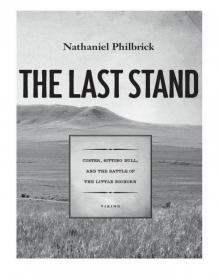 The Last Stand: Custer, Sitting Bull, and the Battle of the Little Bighorn
The Last Stand: Custer, Sitting Bull, and the Battle of the Little Bighorn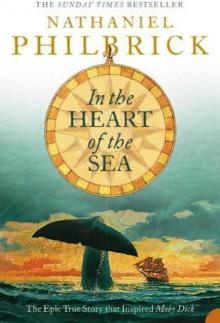 In the Heart of the Sea: The Epic True Story That Inspired Moby-Dick
In the Heart of the Sea: The Epic True Story That Inspired Moby-Dick Away Off Shore: Nantucket Island and Its People, 1602-1890
Away Off Shore: Nantucket Island and Its People, 1602-1890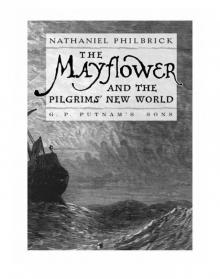 The Mayflower and the Pilgrims' New World
The Mayflower and the Pilgrims' New World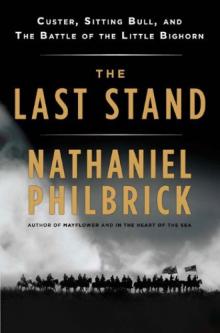 The Last Stand: Custer, Sitting Bull and the Battle of the Little Big Horn
The Last Stand: Custer, Sitting Bull and the Battle of the Little Big Horn Second Wind
Second Wind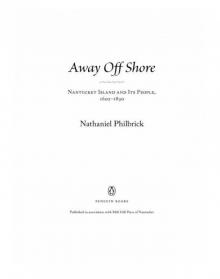 Away Off Shore
Away Off Shore The Mayflower and the Pilgrims' New World*
The Mayflower and the Pilgrims' New World* Sea of Glory
Sea of Glory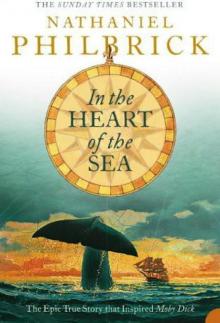 In the Heart of the Sea
In the Heart of the Sea The Last Stand
The Last Stand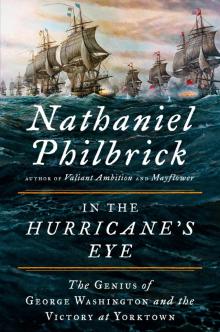 In the Hurricane's Eye
In the Hurricane's Eye